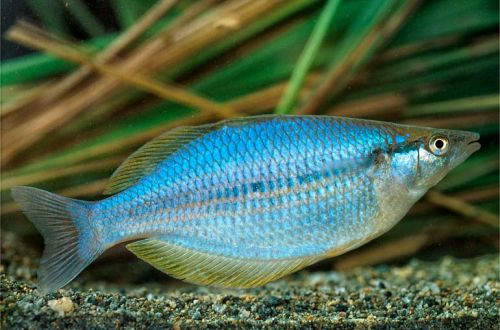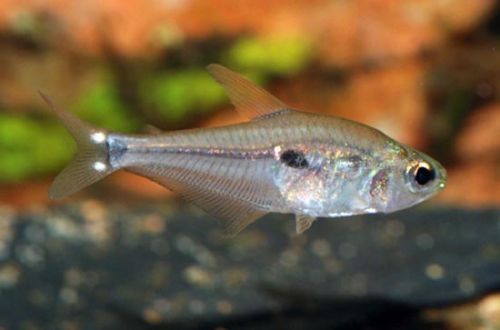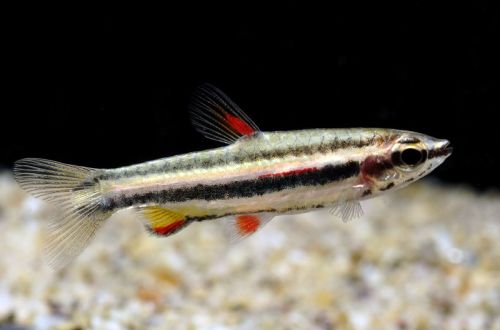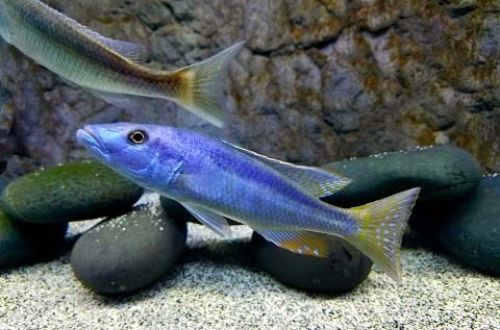
Hilaterina iris
Chilatherina iris, scientific name Chilatherina lorentzii, belongs to the family Melanotaeniidae (Rainbows). Used as an aquarium fish since 2012. Originally from the island of New Guinea, located north of Australia. Inhabits mountain streams and rivers with moderate flow and rocky substrates. Keeps near the flooded snags and other shelters.

Description
Adults reach a length of about 10 cm. Males are blue in color, which turns into silver-blue on the abdomen. A dark blue stripe runs along the sideline.
Females also have blue hues in color, but brownish-green colors are added to them on the back. Yellow stripes are noticeable along the dark blue side stripe. The dorsal, caudal and anal fins may also have yellow tints.
This species was for some time considered a variety of Rainbow fasciata, since both fish live in the same river systems and have similar colors.
Behavior and Compatibility
Peaceful moving fish. They prefer to be in a group of 6-8 individuals. Compatible with other non-aggressive species of comparable size.
Brief information:
- The volume of the aquarium – from 150 liters.
- Temperature – 24-31°C
- Value pH — 7.0–8.4
- Water hardness – medium and high hardness (15-20 dGH)
- Substrate type – any
- Lighting – moderate, bright
- Brackish water – no
- Water movement – moderate
- The size of the fish is about 10 cm.
- Food – any food
- Temperament – peaceful
- Keeping in a flock of 6-8 individuals
Maintenance and care, arrangement of the aquarium
The optimal size of the aquarium for a flock of 6-8 fish starts from 150 liters. The design is arbitrary, subject to the presence of two zones – open water and places for shelters. As the latter, natural driftwood and thickets of aquatic plants are recommended.
The fish prefer warm water of medium to high hardness with pH values above neutral.
Given the need for high temperatures for long-term maintenance, it is necessary to provide sufficient dissolved oxygen and regularly maintain the aquarium, preventing the accumulation of organic waste.
It is recommended to install a productive filtration system combined with aeration. Such a device solves three problems: it maintains a low level of pollution, enriches the water with oxygen and creates a small current, partly simulating the flow of water in mountain streams.
Food
It is considered an omnivorous species. Accepts various products (live and fresh zooplankton), including can be accustomed to dry food.
Sources: FishBase, rainbowfish.angfaqld.org.au





